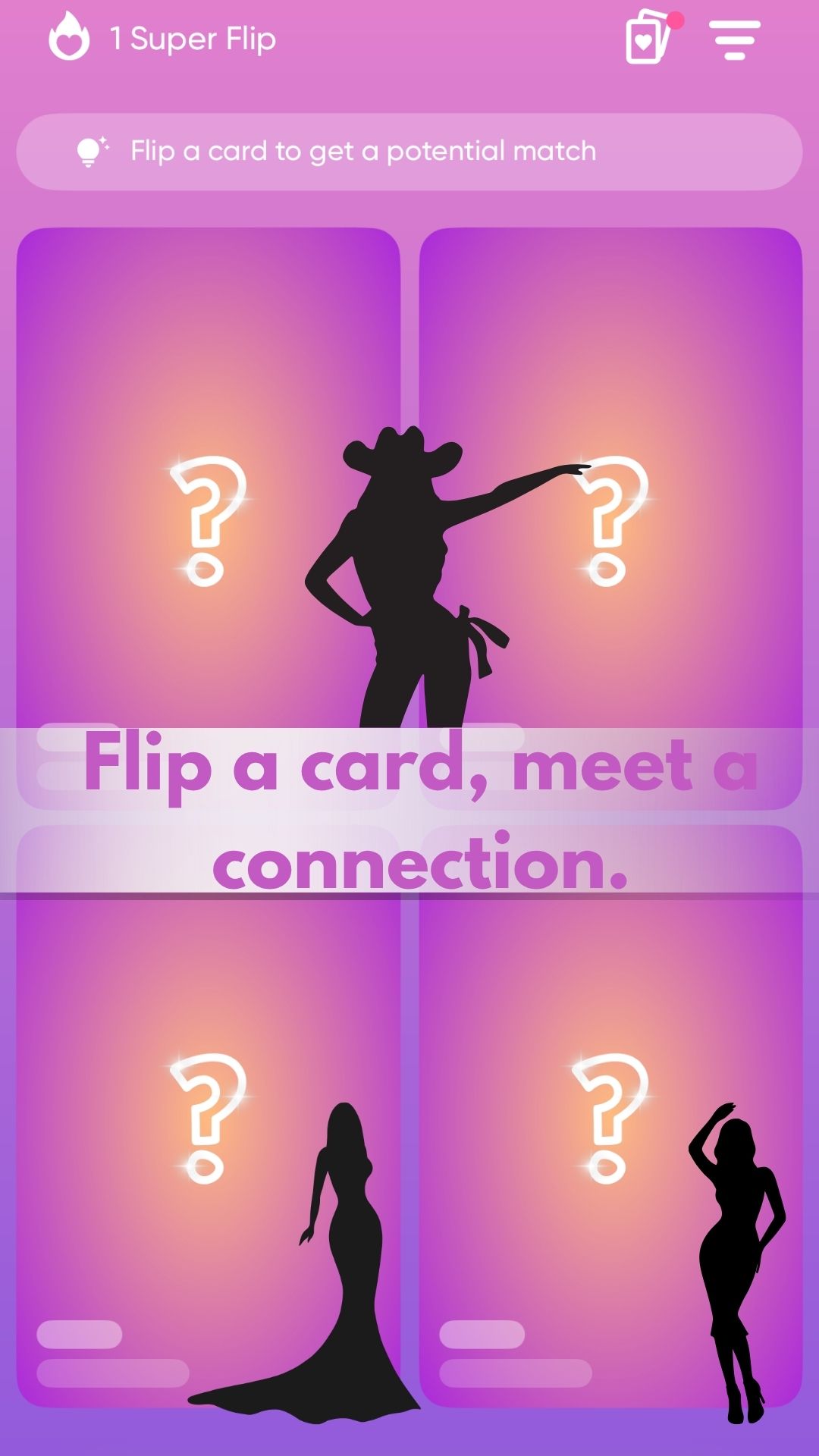⭐Introduction
In modern dating, the slow fade is a subtle phenomenon characterized by a gradual reduction in communication, introducing a layer of ambiguity. Unlike sudden endings, the slow fade resembles a delicate dance where messages gradually diminish, and communication weakens without a clear resolution. Therefore, this paper delves into the art of the slow fade to uncover the psychological and social dynamics of diminishing communication in casual relationships. By understanding this phenomenon, we gain a deeper insight into the challenges and uncertainties inherent in contemporary dating dynamics.
⭐The Gradual Disintegration of Communication
Patterns of the Slow Fade
- Decreased Message Frequency
Initially, both parties may engage in frequent communication with quick message responses. However, over time, the frequency of messages gradually decreases, turning into sporadic and irregular interactions.
- Delayed Response Times
At the beginning, responses may be nearly instant, but as the relationship evolves, response times start to delay. This may indicate that communication is no longer a top priority.
- Reduced Depth of Conversation
Early communication may involve rich content and deep conversations. However, as the slow fade progresses, conversations become more superficial, lacking the previous depth and enthusiasm.
- Vague Responses
As the slow fade occurs, responses become vague and lack specificity. Details and depth in the conversation gradually diminish, making communication more superficial.
- Avoidance of Initiating Contact
In the early stages of the relationship, both parties may initiate contact, sharing aspects of their lives. However, with the slow fade, one party may reduce the initiation of contact, making the conversation more one-sided.
- Lack of Plans and Dates
Initially, both parties may collaboratively make plans and schedule dates. During the slow fade, these plans and dates may become increasingly scarce, indicating a waning interest in maintaining the relationship.
- Silence During Disappearance
When the slow fade reaches a certain point, both parties may enter a period of silence with almost no communication. This silence may stem from one or both parties being unwilling to confront the true status of the relationship.
- Mechanical Interaction
As the slow fade progresses, interactions may become mechanical and uninteresting. Conversations may shift more towards polite exchanges rather than the previous dynamic and exciting engagement.
⭐Factors Influencing the Slow Fade
Fading away in casual dating typically involves an interplay of psychological factors and external influences. Below is a detailed exploration of these two aspects, accompanied by illustrative examples.
🎐Psychological Factors
- Fear of Confrontation
At times, one party may choose to fade away due to the fear of confronting changes in the relationship. This fear may stem from a reluctance to hurt the other person’s feelings, leading to a gradual reduction in communication to avoid directly facing the shift in the relationship.
💕Example: Amy and Chris were very close for a while, but Chris, fearing that Amy might get hurt, chose to gradually fade away by reducing communication.
- Shift in Interests
Individual interests may change over time, causing a diminishing interest in the relationship. This psychological factor may manifest as a decrease in initiating contact and a gradual fading of meaningful conversations.
💕Example: Cameron and Lily were initially passionate about the same hobbies, but over time, Cameron’s interests shifted, leading to a gradual distancing.
- Anxiety and Uncertainty
One party might gradually reduce contact due to anxiety and uncertainty about the future of the relationship, especially in the context of casual dating. This psychological state can result in a gradual decrease in proactive communication to avoid potential discomfort.
💕Example: Jennifer and Mike initially enjoyed a carefree connection, but as time passed, Jennifer became anxious about the uncertainty of the relationship’s future, choosing to alleviate this anxiety through gradual distancing.
- Emotional Fatigue
Occasionally, individuals may opt for a slow fade due to emotional fatigue. Continuous emotional investment and communication may lead to exhaustion, prompting a reduction in contact with the other person.
💕Example: Adam and Sarah were once very close friends, but the pressure of emotional involvement over time left Adam feeling fatigued, prompting him to gradually withdraw from the relationship.

🎐External Influences
- Work Pressure and Personal Challenges
External factors such as work pressure, family affairs, or personal challenges can impact casual dating relationships. These influences may lead to a reduction in the time and energy invested in the relationship.
▫️Example: Renee and Jack’s relationship was affected by the pressure of Jack’s new job, making him busy and resulting in a gradual decrease in communication with Renee.
- Social Pressure and Expectations
Social pressure and external expectations can also affect casual dating relationships. Individuals may feel pressure from their social circles or cultural expectations, leading to a gradual distancing.
▫️Example: Anna and Mark found their relationship influenced by the expectations of their surrounding friends, as their friends wished for them to enter a more formal relationship. Consequently, they chose to gradually detach.
- Social Shifts
Casual dating relationships can be influenced by changes in social circles. When social circles undergo transformations, individuals may face new social expectations, leading to a gradual distancing from previous relationships.
▫️Example: The relationship between Ellie and Brad was influenced by changes in their common friend group. New social expectations prompted them to gradually fade away to adapt to the evolving social dynamics.
- Family Pressure
Pressures and responsibilities in the family domain can also impact casual dating relationships. Individuals may feel fatigued due to family affairs, resulting in a reduction in contact with their partners.
▫️Example: David and Alice, amidst an increase in family affairs, felt immense pressure, causing their relationship to become distant and eventually choosing to fade away slowly.
⭐Communication Patterns in Casual Dating
- Easygoing Conversations
Communication typically unfolds in a relaxed and humorous manner, emphasizing pleasant dialogue and a laid-back atmosphere.
- Open Self-Expression
Both parties tend to express their thoughts, feelings, and expectations more openly, without much reservation.
- Spontaneous and Impromptu Interaction
Communication may be more spontaneous, happening anytime, anywhere. Parties might casually exchange messages or suggest impromptu activities.
- Unplanned Activities
Activity choices are usually more casual, with both parties opting for less planned activities such as coffee meetings, walks, or other simple encounters.
- Avoidance of Overly Serious Topics
Communication generally steers clear of overly serious or heavy topics, focusing more on laughter and a light-hearted atmosphere.
- Emphasis on Present Interaction
There’s a preference for present interaction, with less involvement in long-term planning or commitments.
- Maintaining Contact Through Text and Social Media
Text messages and social media become the primary means of staying connected, with frequent sharing of life’s moments.
- Flexibility and Freedom
The communication pattern underscores flexibility and individual freedom, respecting each other’s space and independence.
- Gradual Deepening of Understanding
Understanding each other’s deeper aspects happens gradually, with parties slowly sharing more profound information but without rushing to establish a deep connection.
- Possibility of Immediate Breaks
Due to the nature of casual dating, the communication pattern may include the possibility of immediate interruption or termination, with both parties more accepting of this uncertainty.
⭐Emotional Impact: Navigating the Ambiguity
- Confusion and Uneasiness
The other party may feel bewildered, reflecting on past interactions and attempting to find any possible signs or clues. They may ask themselves, “What happened between us?” This confusion can lead to emotional uneasiness as they struggle to understand the reasons behind the gradual disappearance.
🌱Example: Alex, upon noticing Kate’s gradual distancing, feels profoundly confused as their previous interactions were always close. He begins to recall past conversations and behaviors, trying to find clues.
- Worry and Anxiety
The other party may start to worry about the future trajectory of the relationship. They may experience anxiety, wondering if the other person has lost interest and what the future holds.
🌱Example: Lily becomes concerned about Mike’s sudden distancing. She begins to wonder if she did something wrong and if this signifies issues in their relationship.
- Self-Doubt
The gradual disappearance may trigger self-doubt in the other party, causing them to question their value and attractiveness in the relationship. They may engage in self-reflection, contemplating if there are shortcomings on their part.
🌱Example: Amy, feeling Mike’s detachment, starts to doubt whether she is interesting or attractive enough, attributing the situation to her perceived inadequacies.
- Seeking Explanations
The other party may spend time seeking explanations, attempting to comprehend why the gradual disappearance occurred. They may review past events, searching for any possible triggering factors.
🌱Example: Christine tries to figure out if Mike’s recent work pressures are linked to his gradual distancing. She reviews recent interactions, seeking any potential explanations.
- Emotional Fatigue
As the awareness of the other’s gradual withdrawal deepens, the other party may begin to experience emotional fatigue. Continuous emotional investment and communication efforts may lead to a sense of mental strain.
🌱Example: Joseph realizes Megan’s gradual withdrawal is causing emotional fatigue. Despite his efforts to sustain the relationship, her lack of active response takes a toll.
- Seeking Communication
In an effort to address the troubled relationship, the other party may attempt to communicate with the one who is gradually disappearing, hoping to understand what is happening and jointly find solutions.
🌱Example: David decides to directly ask Alice about her gradual disappearance, aiming for open dialogue to resolve the issues and restore balance to the relationship.
- Accepting Reality
With the passage of time, the other party may gradually come to terms with the reality of the gradual disappearance. They begin to adjust their emotions and expectations, adapting to the new emotional state.
🌱Example: Lisa eventually accepts Mark’s gradual distancing and starts trying to lead her own life, no longer focusing all attention on the relationship.

⭐Technology’s Role: The Influence of Digital Communication
- More Frequent Digital Contact
While staying in touch through messages, social media, and calls every day, this frequent digital contact becomes monotonous and lacks depth over time. Every message seems routine, losing the genuine emotional connection they once shared.
🔹Example: Linda and Mark exchange messages every day, but they gradually notice their conversations becoming more superficial. Even though they share daily trivialities, it fails to reach the real emotions within.
- Anytime, Anywhere Instant Messaging
Despite the convenience of anytime, anywhere messaging, it may lead to awkwardness in face-to-face communication. Over-reliance on text and emojis might make conveying genuine emotions challenging, resulting in communication confusion.
🔹Example: Adam and Alicia communicate frequently through instant messaging, but when they attempt face-to-face conversations, they find it challenging to express their true feelings, causing communication difficulties.
- Observation and Alienation on Social Media
Observing each other’s lives through social media can lead to misunderstandings and anxiety. Pictures and status updates may only show surface-level happiness, neglecting the real emotional state behind the scenes.
🔹Example: Claire sees her partner Mark participating in social activities on social media, but without inviting her. This makes her feel excluded, generating feelings of unease.
- Limitations of Emotional Expression
Dependency on text and emojis may limit the expression of emotions. One may struggle to understand the other’s true feelings, as digital communication tools cannot convey the subtle differences in genuine emotions.
🔹Example: Charlotte attempts to express love for Alan through text, but words fail to convey the depth of her emotions, leaving Alan confused about her true feelings.
- Information Overload and Neglect
Both parties may overlook each other’s real needs due to information overload. Receiving a large volume of messages in a short period may lead to fatigue, causing both to ignore the deeper needs of the relationship.
🔹Example: Ben and Sarah exchange a large volume of messages every day, but this frequent digital interaction gradually makes them neglect each other’s inner needs, resulting in relationship distance.
- Possibility of Digital Disconnection
Digital tools may serve as a means of disconnection. One may choose to stop replying to messages or delete traces on digital platforms, expressing the intention of gradual distancing through digital means.
🔹Example: James notices Amy starting to stop responding to his messages and deleting their photos on social media, indicating signs of digital disconnection.
- Uncertainty in Conversation
Conversations on digital platforms may lead to uncertainty. Lack of language and non-verbal elements in face-to-face communication may make it difficult for both parties to accurately understand each other’s true feelings and intentions.
🔹Example: Lily and Jeff discuss their relationship issues through text, but lacking face-to-face communication, both feel uncertain about each other’s true feelings.
- Impact of Digital Monitoring
Through digital tools, one may monitor the activities of the other. This digital monitoring may lead to suspicion and mistrust, exacerbating the instability of the relationship.
🔹Example: David starts monitoring Alice’s activities on social media, developing doubts about her attitude towards the relationship, leading to relationship discord.
⭐Recognizing the Signs: Is It a Slow Fade or Natural Progression?
1. Communication Patterns
- Slow Fade: Gradual reduction in the frequency and depth of communication without clear reasons.
- Natural Progression: Shifts in communication align with evolving life circumstances and priorities.
2. Emotional Engagement
- Slow Fade: Decreased emotional investment and a sense of detachment.
- Natural Progression: Emotional shifts are a result of personal growth and changing dynamics, not withdrawal.
3. Plans and Commitments
- Slow Fade: Unexplained cancellations, avoidance of making future plans.
- Natural Progression: Plans may evolve organically as individuals pursue personal goals, but commitment remains.
4. Digital Disconnect
- Slow Fade: Subtle withdrawal on digital platforms, such as delayed responses or limited interaction.
- Natural Progression: Digital presence may change, but intentional communication remains a priority.
5. Quality Time
- Slow Fade: Decrease in the quality and meaningfulness of shared experiences.
- Natural Progression: Shifts in priorities may lead to different types of shared activities but maintain depth and connection.
6. Initiative and Effort
- Slow Fade: Unequal effort in maintaining the relationship, with one party disengaging.
- Natural Progression: Shared effort in adapting to changing circumstances and priorities.
7. Transparency
- Slow Fade: Lack of openness about feelings and intentions, creating ambiguity.
- Natural Progression: Transparent communication about evolving emotions and expectations.
8. Reflection on Personal Growth
- Slow Fade: Limited acknowledgment of personal growth and change.
- Natural Progression: Recognition of individual growth and its impact on the relationship.
9. Closure and Communication
- Slow Fade: Absence of clear communication about the evolving nature of the relationship.
- Natural Progression: Open and honest communication about changing feelings, fostering mutual understanding.
⭐Coping Strategies: Dealing with Disappearing Conversations
- Open and Honest Dialogue
Express your feelings candidly and inquire if the other person shares similar sentiments. Ensure communication is open and devoid of blame.
- Active Listening
Provide space for the other person to express their feelings. Listening to their opinions and emotions helps facilitate deeper conversations.
- Understanding Individual Needs
Comprehend each other’s current life stages and needs to ensure that decisions are not based on personal issues or challenges.
- Seeking Counseling
If the situation becomes complex, consider seeking professional mental health counseling to help navigate complex emotional states.
- Self-Reflection
Reflect deeply on your own needs and expectations, ensuring that your expectations align with those of the other person.
- Setting Boundaries
If necessary, set clear boundaries to define each other’s expectations in the relationship. This helps reduce misunderstandings and anxiety.
- Therapeutic Reflection
Consider reflective therapy sessions that encourage open discussion about feelings and expectations within the relationship.
- Acceptance of Possible Outcomes
If the other person persists in the slow fade approach, learn to accept possible outcomes, even if it may bring about pain.
- Invest in Personal Growth
Shift focus towards personal growth and development, cultivating personal interests to enhance self-worth during periods of relationship transition.
- Maintain Calmness
Avoid becoming overly emotional and making impulsive decisions. Maintain composure and calmly assess the current state and future of the relationship.
- Build a Support System
Share your feelings with friends, family, or mental health professionals to establish a robust support system.
- Self-Care
Redirect focus towards personal needs and happiness. Engage in activities that bring joy and fulfillment.
⭐Conclusion: Decoding the Art of Disappearing Conversations
In conclusion, the slow fade in casual dating is a nuanced phenomenon influenced by various psychological and external factors. Understanding the art of disappearing conversations empowers individuals to navigate the complexities of casual relationships with insight and resilience. As technology continues to shape the landscape of modern romance, decoding the slow fade becomes integral to fostering healthier and more transparent connections in the ever-evolving world of casual dating.
-

50% Chance at Fun: How to Play with “Card Flip” Matching on Kasual
-

What is the Tea App? Full Guide & Features (2025)
-

9 Best Dating Sites for Farmers and Cowboys in 2025
-

Spot the Faker: 10 Real-Life Tips to Outsmart Scammers on Dating Apps






